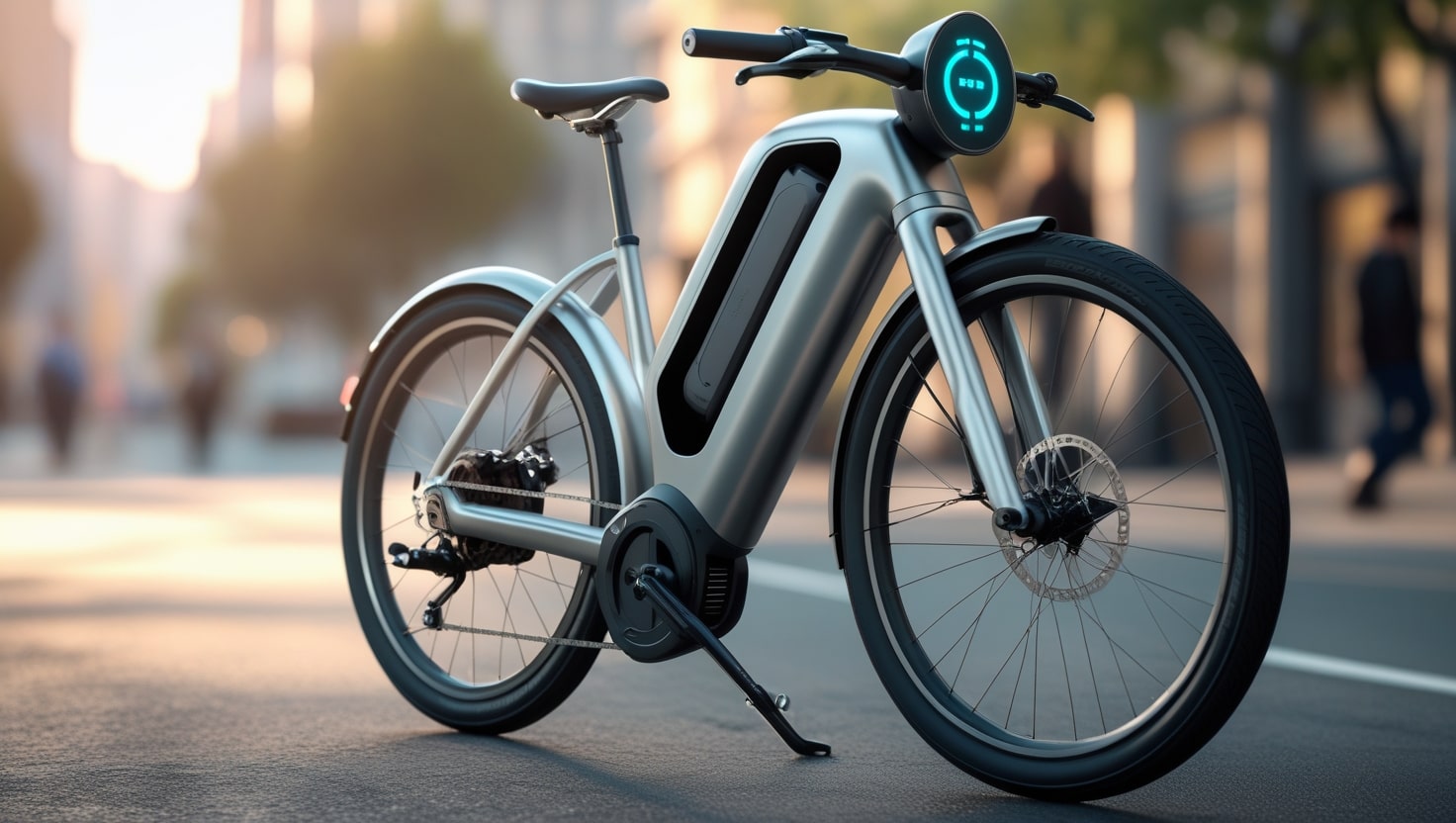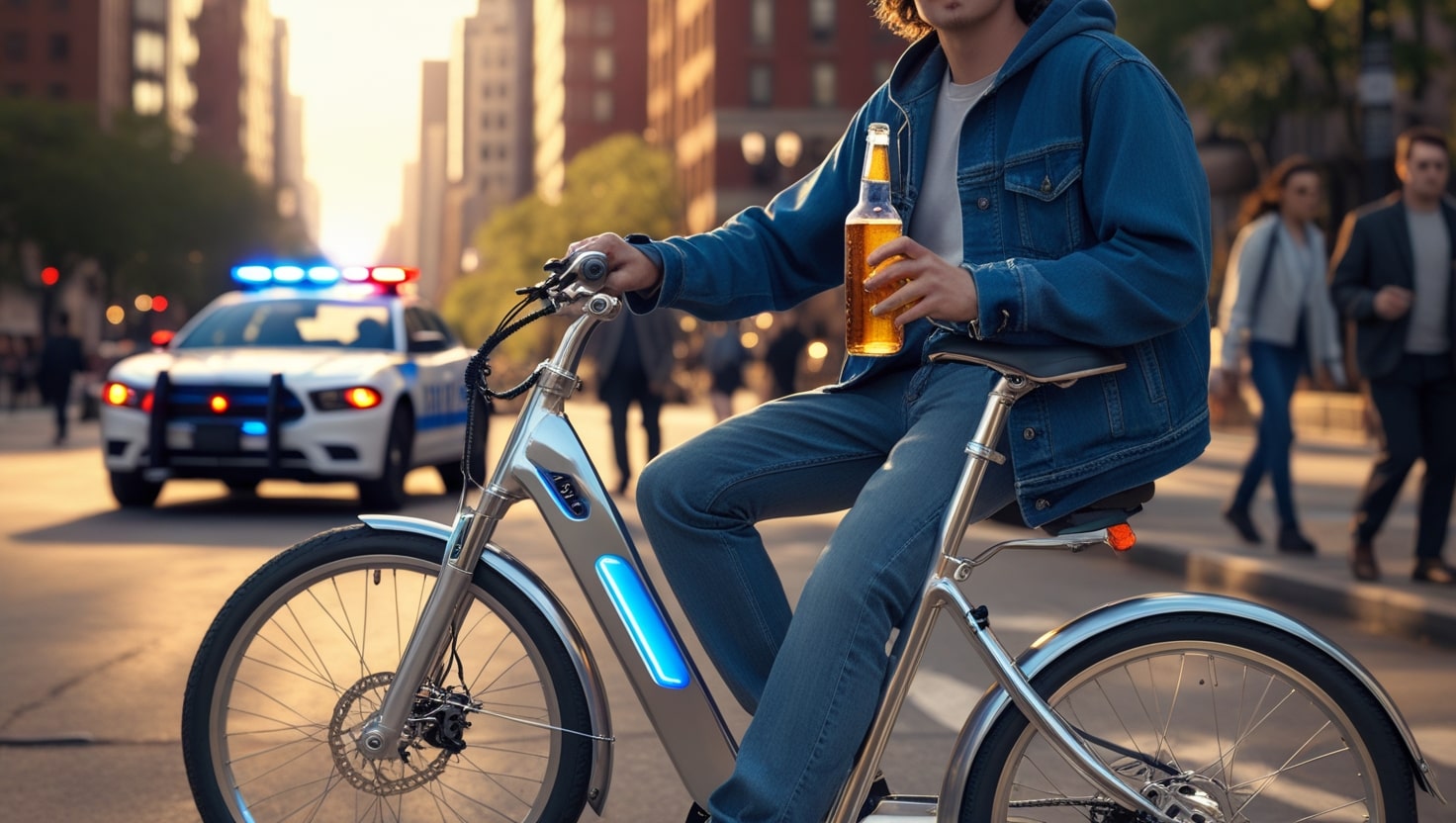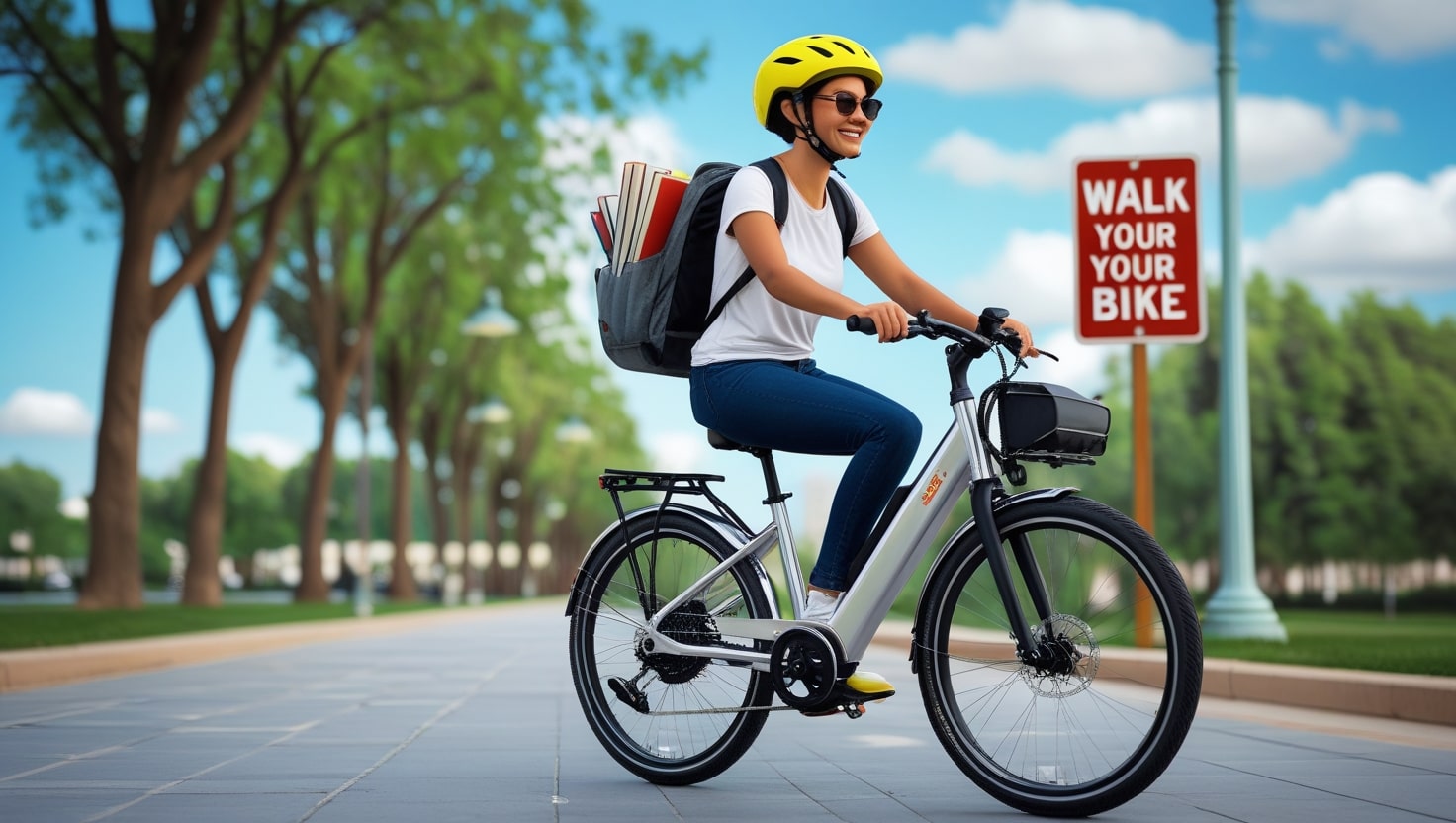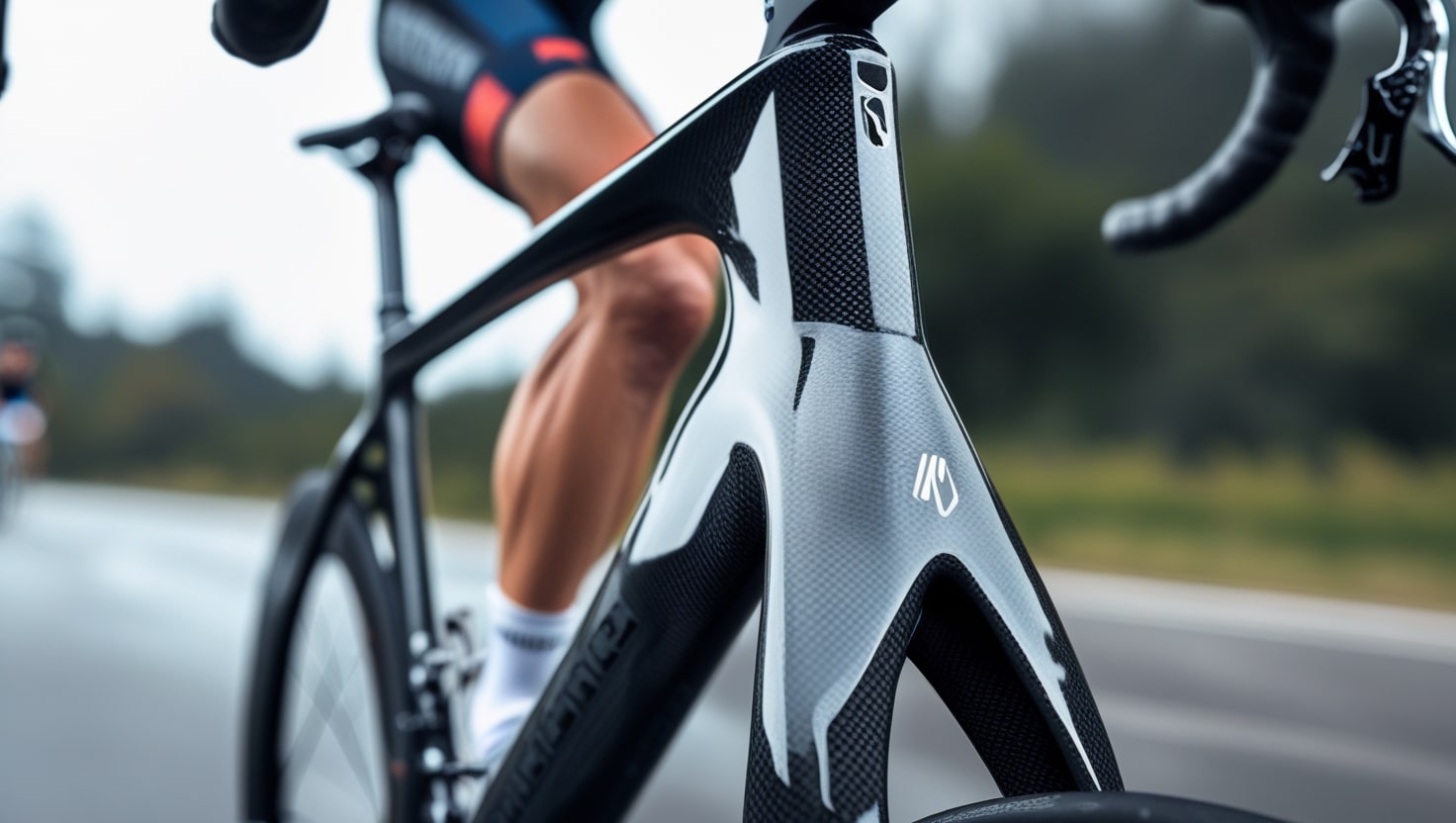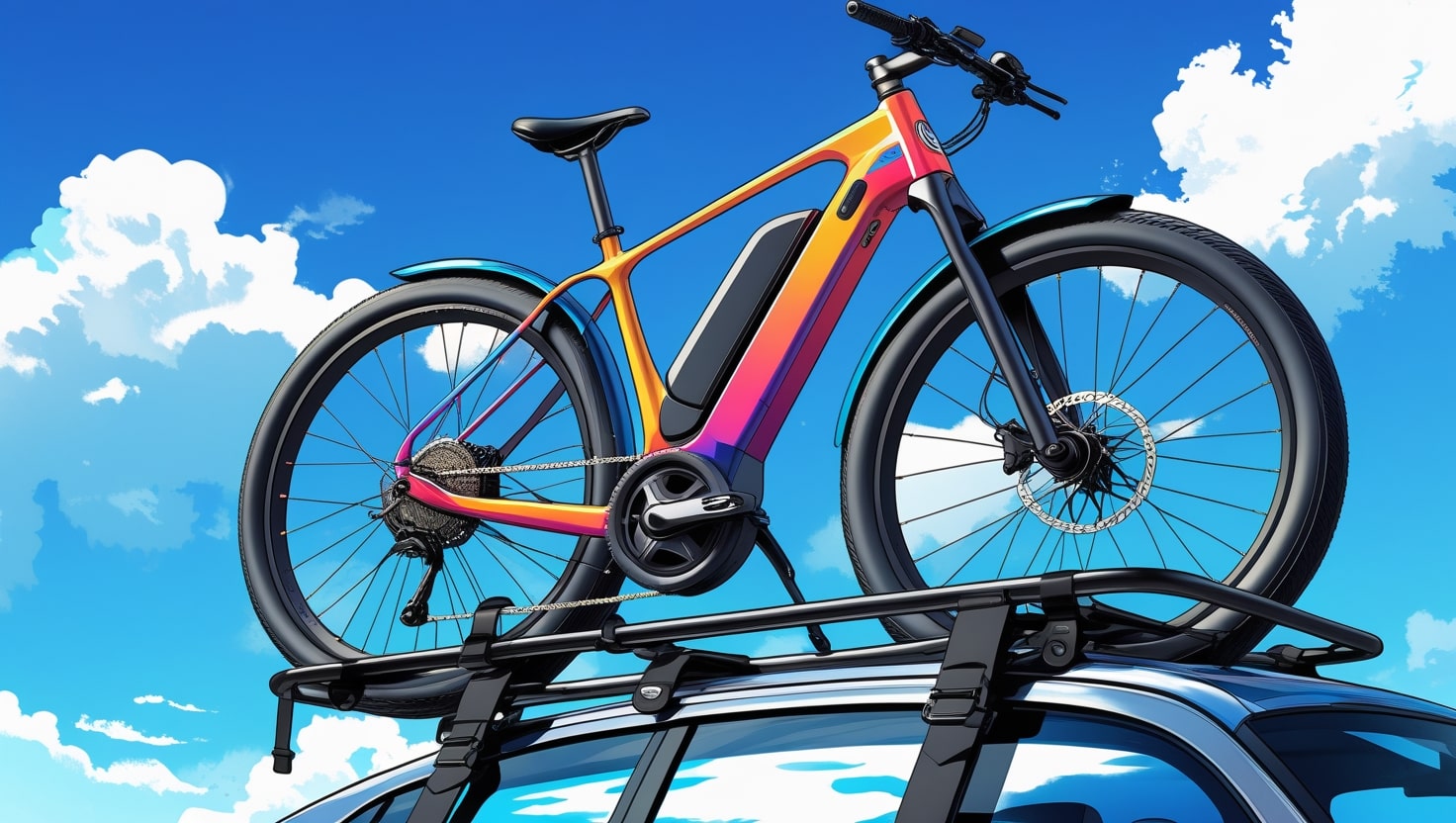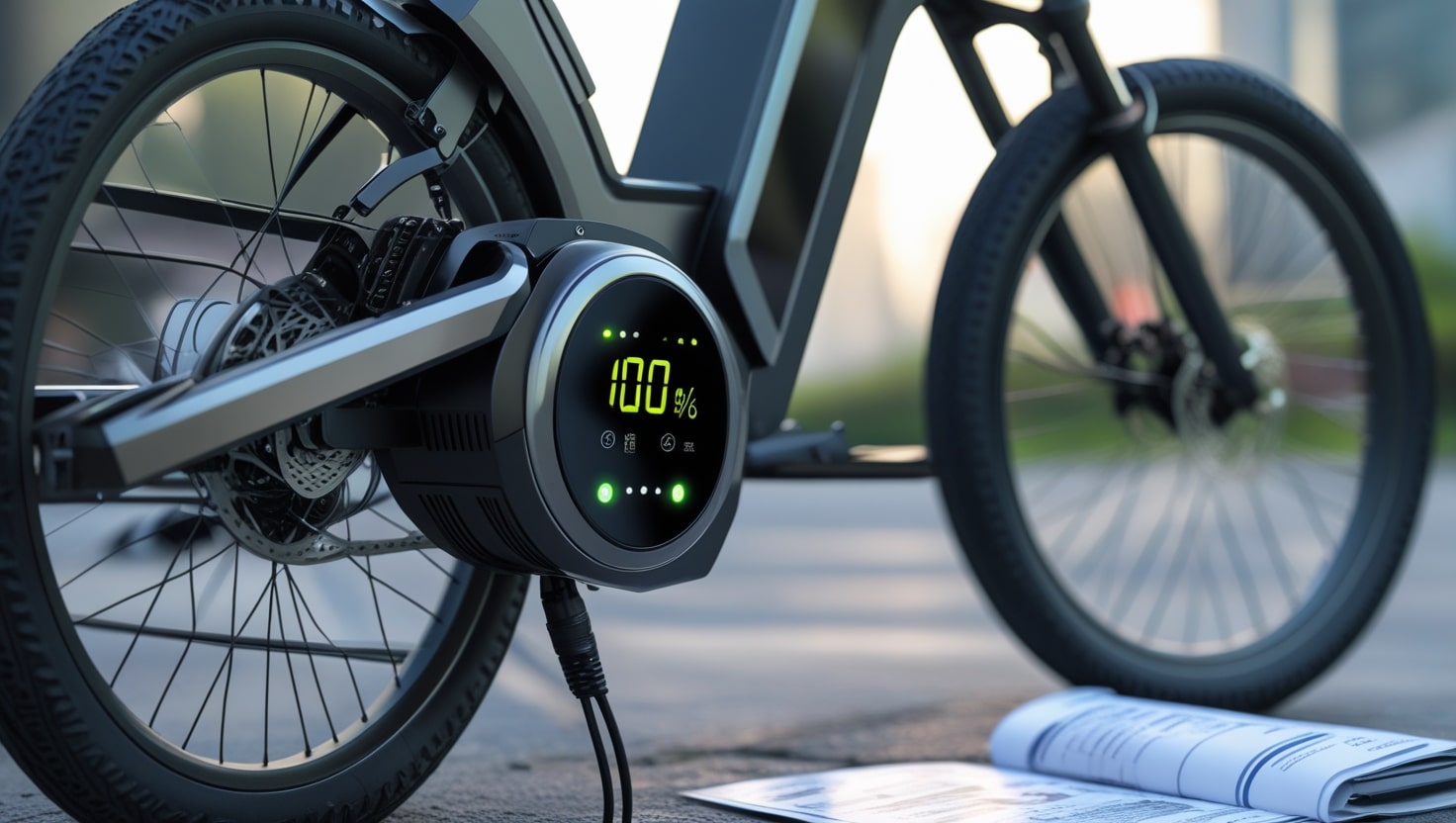If your e-bike suddenly starts acting off—say the motor doesn’t respond like it’s supposed to, or your ride just doesn’t feel as smooth as usual—you’re not alone. I’ve faced the same problem during both commuting and leisure rides, and trust me, it can be frustrating. Most of the time, the issue comes down to the controller, a crucial component responsible for the operation of your ebike. This small but mighty unit ensures the technology inside your bikes actually works. A faulty controller affects overall performance, and knowing how to reset ebike controller can save you from a costly visit to a repair shop.
That’s why I’ve put together this practical guide to help you reset your e-bike controller effectively. I’ll explain the necessary steps to take when things go wrong. Whether you’re aiming to transform your daily commuting or simply want a smoother experience on your weekend trail, a quick reset can often be the solution to common issues. Let’s dive in and discover how something as simple as a reset can bring your ebike back to peak condition.
Also Read: How to Reset E-Bike Battery
What Is an Ebike Controller?
Before learning how to reset ebike controller, it helps to know why it’s such an important component of your ebike. From years of tuning different electric bikes, I’ve come to think of the controller as the brain—a central command center tucked inside the frame that receives inputs from your pedaling, throttle, and sensors. After analyzing this data, it modifies the electricity flow from the battery to the turbine.It’s not just about turning on the power—it’s about balance. The controller manages power distribution, making your riding feel more intuitive, stable, and responsive, especially when your effort and chosen assist level come into play.
What I also love is how it integrates safety features like motor cutoff during braking, overheating and overloading protection, and built-in diagnostics to detect small issues before they get serious. It’s precisely positioned to handle real-time decisions—whether it’s controlling speed, tweaking torque, or ensuring the systems stay cool and run smoothly. This kind of design helps safeguard not just the electronic parts of the e-bike but also you, the rider.
How Does an Electric Bike Controller Work?
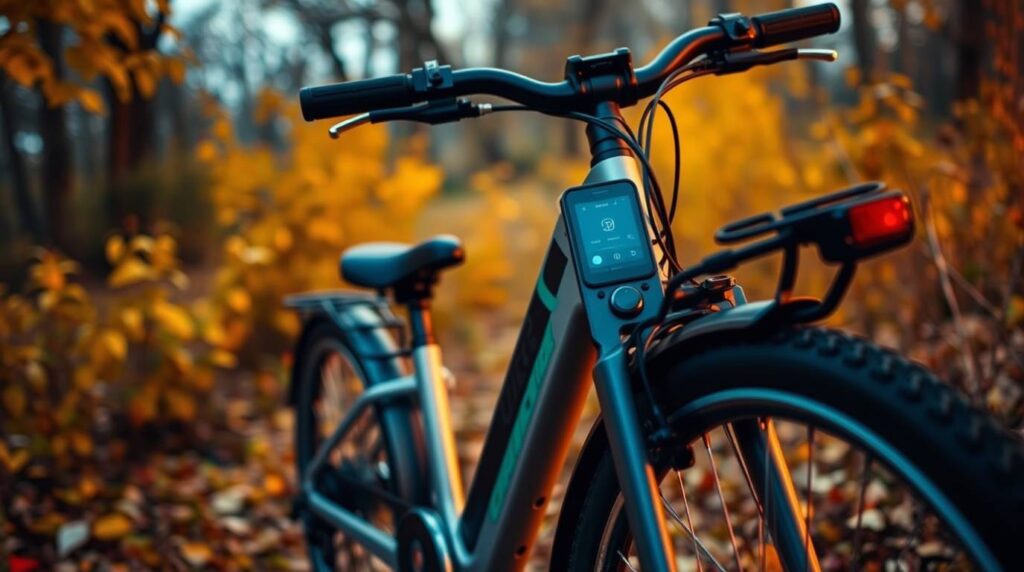
An amazing and complex combination of electronic parts and clever programming powers the controller in e-bikes. To perform its functions effectively, it basically depends on an integrated system of sensors, electrical circuits, and microprocessors. Here’s a closer look at how it functions internally:
Signal Reception: The controller constantly receives signals from the throttle, pedal-assist sensors, and brake levers. Whether the throttle is pressed or twisted or the rider is pedaling with more effort, these actions generate specific inputs. When the brake is engaged, it also sends a signal to trigger the motor to stop, helping to ensure safety and control.
Signal Processing: A microprocessor inside the controller interprets the incoming signals and calculates the correct motor output. It factors in the current speed, how hard you’re pedaling, and which power mode is currently selected (some bikes have multiple modes available).
Power Modulation: The controller uses Pulse Width Modulation (PWM) techniques based on electrical principles. PWM adjusts the amount of voltage and duration of pulses supplied to the motor. This directly affects torque and acceleration, allowing the bike to run smoother, consume less battery power, and extend battery life.
Feedback Loop: The system also monitors feedback from the motor and battery, including temperature, voltage, and current speed. It uses this information to maintain smooth performance and protect the bike’s critical components. This helps prevent damage from overheating or overloading and maintains the system’s good health over time.
Safety and Efficiency Management: The controller follows programmed algorithms to make sure the bike operates within safe parameters. If a malfunction occurs or critical thresholds are crossed, such as undervoltage in the battery or motor overheating, the system can reduce power or even shut down entirely to prevent harm.
Why Your eBike Controller Matters
Think of the controller as the brain of your electric bike. It is the essential part that controls how battery power is used, determining how the motor, throttle, pedal, and other parts, such as the display unit, react.
If it’s not working right, your bike might act up—jerky movements, a failure to accelerate, or sudden power cuts. The controller also helps coordinate all electrical signals, ensuring that each part knows when to stop, deliver, or adjust speed based on your input.
From my own experience, if your e-bike starts misbehaving, the issue often isn’t a broken unit—it could be a minor software bug or a need to reconnect certain parts. In these cases, a quick reset can solve the problem. The process is usually straightforward and only takes a few minutes, saving you a trip to the repair shop.
How to Reset ebike Controller: Step-by-Step Guide
Step 1 – Turn Off Your eBike
The first and most important step in resetting your electric bike is shutting it down completely. I always recommend switching it off using the main power button, which you’ll usually find on the battery or near the display screen. Give it a few seconds to settle—this allows the system to fully power down and ensures no electrical parts are still active. Skipping this part can lead to short circuits or other issues if you’re working on an engaged system.
Step 2 – Disconnect the Battery
Once your eBike is powered down, the next step is to disconnect the battery completely. This action cuts the power supply to the controller and the rest of the electrical system, allowing the reset to begin safely. Most eBikes come with a lock-and-release mechanism, so you might need to use the key to unlock it before sliding it out or unplugging it. I always recommend you handle the battery carefully and place it on a clean, dry surface while you continue with the reset process.
Step 3 – Wait 5 to 10 Minutes
After the battery has been removed and the bike is fully powered off, it’s important to wait at least 5 to 10 minutes. This short pause gives the controller enough time to drain any leftover electrical charge, similar to rebooting a frozen computer or smartphone. In my experience, this simple waiting step helps clear out temporary software glitches that might be causing weird behavior or problems with your e-bike.
Step 4 – Reconnect the Battery
Once you’ve waited the recommended time, it’s time to reconnect the battery. Gently slide or plug it back into its place, making sure it’s securely connected. If your battery locks, listen for the clicks that confirm it’s fastened properly. From experience, I always inspect the terminals, connectors, and surrounding areas for any dirt, moisture, or loose wires. A clean, tight connection is key to restoring proper power flow to the controller and avoiding unwanted interruptions during your ride.
Step 5 – Turn the eBike Back On
Now that the battery is reconnected, go ahead and turn your eBike power back on. Keep an eye on the display unit for any signs of improvement—like a smoother throttle response, restored controller settings, or more stable pedal assist levels. I usually check whether the throttle responds quickly, if the assist is active, and whether any previous error codes, unusual speed shifts, or strange readings have disappeared. If everything feels normal, chances are the reset has fixed the issue, and your ride should be good to go.
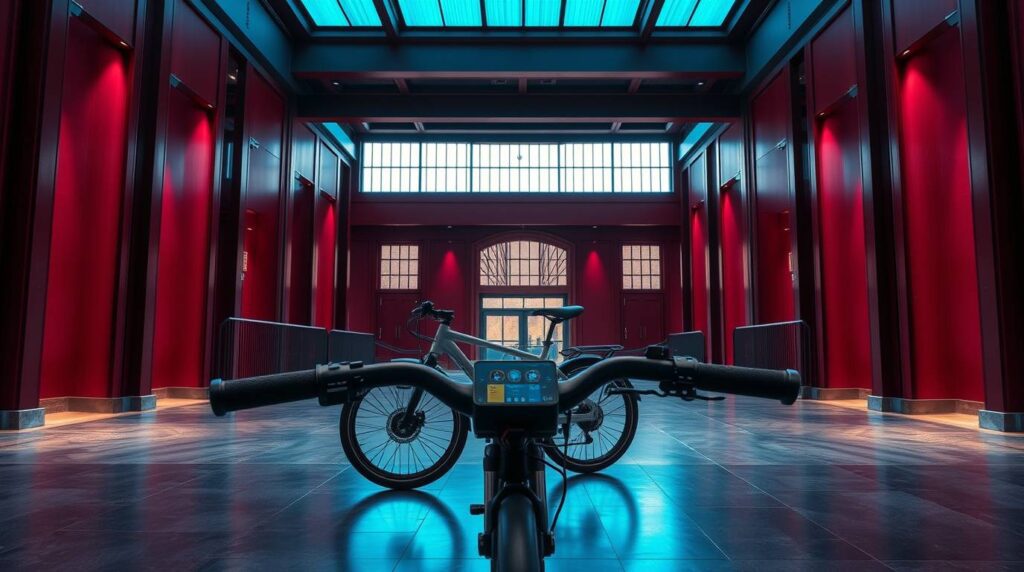
How to Reset Ebike Controller Via Display Panel
Although the precise procedure may vary depending on the manufacturer and design of your electric bike, resetting the controller on your e-bike is typically a straightforward process. Here is an easy guide that will take you step-by-step through the reset procedure.
Go to the Settings Menu: First, turn on your e-bike and check that the display panel is working properly. Then, navigate through the menu using the physical buttons, often marked as Mode, Set, or arrow keys (up and down). On some models, holding the buttons simultaneously for 3 seconds will bring you directly to the default settings screen.
Find the Factory Reset Option: Once inside the settings, scroll through and locate the reset option, which might appear as Reset Settings, Factory Reset, or Default Settings. If it’s not visible, refer to your e-bike’s user manual for specific instructions. The manual often explains how to access hidden settings or advanced function modes.
Perform the Reset: After you find the reset setting, choose it and press to confirm. Your panel will likely ask for confirmation before continuing. To start the reset and move on, select Yes.
Wait a few seconds as the controller resets all values to factory defaults.Test Ride and Monitor Performance: Take your bike out for a test ride and monitor the performance closely. Make sure the earlier error codes or glitches are resolved. Watch the display for anything unusual and confirm that everything feels back to normal.
Common Signs Your eBike Controller Needs a Reset
Sometimes, for no apparent reason, your eBike may act strangely. Frequently, the problem can be resolved with a quick controller reset. The following are typical indicators to watch out for:
Throttle not responding: If the throttle feels unresponsive, twisting it may do nothing or cause jerky acceleration.
Error codes on the display: Seeing persistent error codes like Error 21, Error 30, or Error 08 on your display is a clear warning.
Pedal assist stops working: When the pedal assist stops working, even though you’re actively pedaling in assist mode, the motor not engaging is a major sign your controller might need a reset.
Power cuts during a ride: Sudden power cuts, shut-offs, or inconsistent power delivery mid-ride are frustrating and unsafe.
Display screen glitches: A frozen or flickering screen, flashing symbols, incorrect data, or weird readings may point to a communication fault between the display and controller.
Motor behaving erratically: If your motor starts behaving erratically—such as unexpected surges, stalling, or making unusual noises.
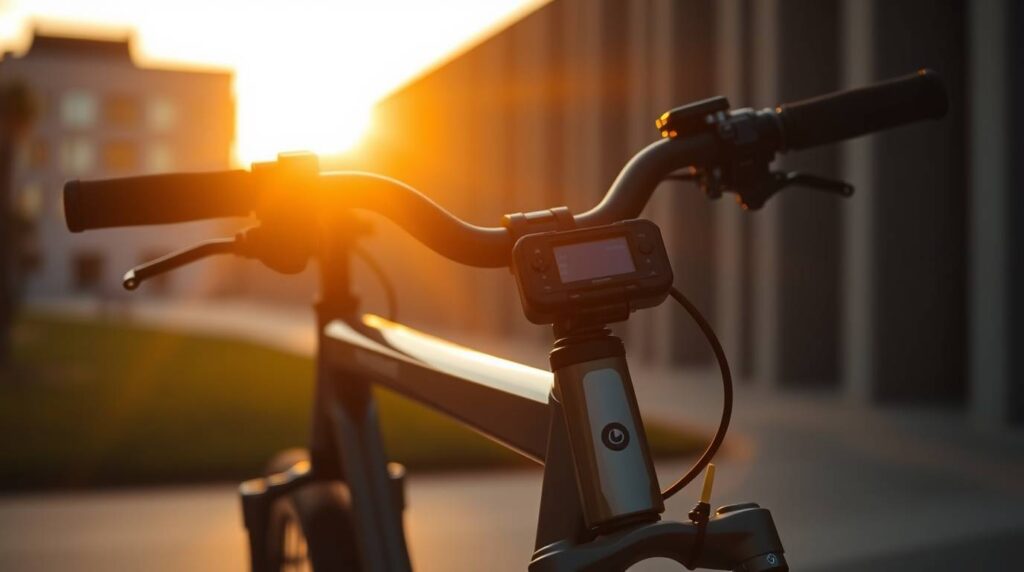
Is It Safe to Reset an eBike Controller Yourself?
Yes, it’s generally safe to reset your eBike controller at home if you follow the correct steps and use some basic precautions. The process usually involves powering the bike off, disconnecting and removing the battery, and waiting a few minutes before continuing. As long as you’re not tampering with internal electronics, touching wiring, or doing anything complex, the task remains simple.
However, it’s important to be thoughtful if you feel unsure at any point. Always check your user manual and read any brand-specific warranty conditions that may be affected by DIY attempts. If anything seems damaged or you’re unclear on a step, it’s wise to proceed slowly or contact customer support.
Understanding eBike Error Codes
| Error Code | Issue | What It Means | Will a Reset Help? |
|---|---|---|---|
| 21 | Throttle | Not responding or disconnected | ✅ Often |
| 22 | Brake Sensor | Stuck brakes or brake input signal | ✅ Usually |
| 23 | Motor Phase | Wiring fault or connection issue | ⚠️ Sometimes |
| 24 | Motor Sensor | Faulty hall sensor in motor | ⚠️ Sometimes |
| 25 | Overheat Sensor | Temperature sensor issue or overheating | ❌ Rarely |
| 30 | Communication | Controller can’t connect to display or motor | ✅ Often |
| 06 | Low Battery Voltage | Battery nearly empty or BMS limiting power | ⚠️ Maybe |
| 07 | High Voltage | Overcharging or electrical surge | ❌ Rarely |
| 08 | Hall Sensor | Motor sensor glitch | ⚠️ Sometimes |
| 12 | Controller Overheating | Too hot to operate safely | ❌ Wait & cool down |
| 03 | Pedal Assist Sensor | PAS not detecting pedaling | ✅ Often |
| 05 | Cruise Control | Throttle input conflict or sensor bug | ✅ Usually |
Also Read: How to Turn on Peloton Bike
How Often Should You Reset an Electric Bike Controller?
You don’t need to reset your eBike controller as part of everyday maintenance. In general, if your eBike is running smoothly and there are no error codes, delays, or problems with throttle response or settings, there’s no reason to touch it. Most riders only reset their controllers once or twice a year, usually after a major change like replacing the motor, battery, or other key parts. Think of it like rebooting your phone—you do it when something feels off, not every day.
You could require resets more regularly, though, if you ride in challenging conditions—such as muddy, dusty, or damp trails—or if you constantly change parameter settings. That’s because unexpected behaviors or changes in current performance can pop up more easily in harsh environments.
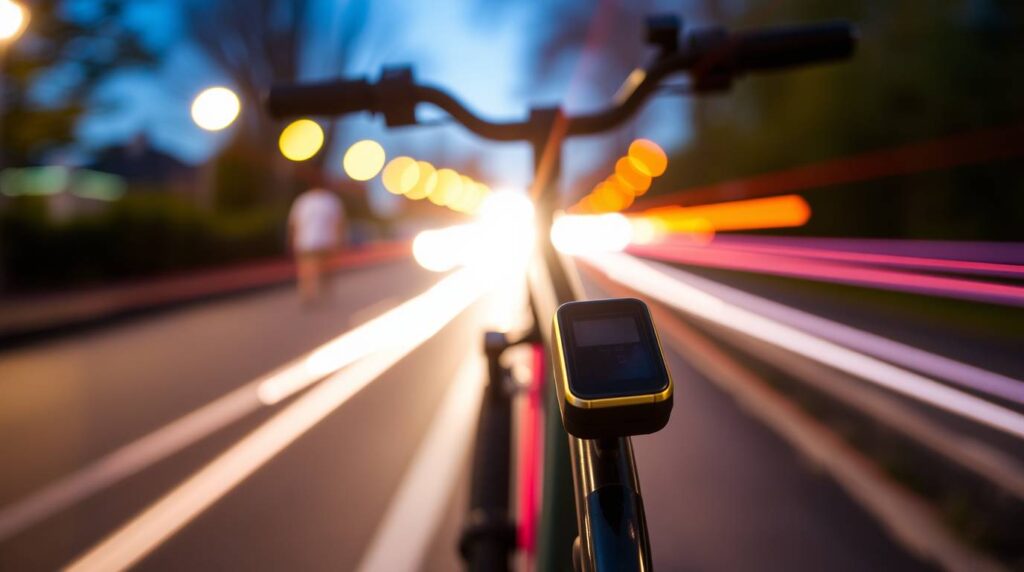
Troubleshooting If the Reset Doesn’t Work
There may be an underlying issue if you’ve tried every reset and your eBike is still not working correctly. Here are some areas to look into:
Battery issues: Make sure the battery is fully charged and securely connected. To rule out basic problems, try replacing it with a spare if you have one.
A weak or unstable battery often causes inconsistent performance.Loose or damaged wiring: Carefully inspect all cables running from the controller, throttle, motor, and battery. Check for any loose or broken connections, dirt or moisture accumulation, and frayed wires. Any of these could be the problem even after a reset.
Display malfunction: Sometimes the display is the issue, not the controller. Check your model for any available software updates, or try resetting the display separately. A malfunction here could affect the whole system.
Throttle or PAS sensor faults: If the bike isn’t responding to input, test the throttle and PAS sensor one at a time. A faulty sensor may need testing or replacement if the faults continue after the reset.
Controller failure: If none of the above steps solve the problem, the controller itself may be faulty. Internal failure sometimes happens, and in that case, a full replacement may be the only solution.
Also Read: Top 5 Best Airbag Vests for Motorcycles
Expert Tip: Don’t Forget the BMS
If a regular reset doesn’t seem to fix your eBike, don’t overlook the Battery Management System (BMS). The BMS plays a key role in helping your controller respond properly by managing things like battery voltage, charge cycles, and overall battery life. Sometimes, if the system gets out of sync, simply resetting the controller won’t be enough.
In my experience, disconnecting the battery and letting the bike sit for several minutes can help reset the BMS too. This pause gives the system time to rebalance, restoring proper communication and allowing everything to work as expected. Giving your battery a quick break might be just the reset your setup needs to regulate itself and run smoothly again.
Conclusion
No matter if you’re a seasoned rider or just getting started, understanding how your controller works can make a big difference in your riding experience. In addition to being more comfortable to ride, a well-maintained e-bike is also more reliable in the event of problems. You’ll be more equipped to fix minor issues and maintain the smooth operation of your bike if you are familiar with how your system works and know when to reset.
A quick reset can go a long way in maintaining optimal performance and extending the life of your electric bike. It’s a simple step that’s crucial for a seamless ride and gives you the confidence to hit the road anytime.
Also Read: Why Are My Bike Brakes Squeaking?
FAQs
Can I damage my eBike by resetting the controller?
You won’t damage your bike if you follow the correct steps. Before you begin, always make sure the e-bike is fully powered off and the battery is safely disconnected.
What happens if a reset doesn’t fix the problem?
If a reset doesn’t solve the problem, there might be a deeper issue like a faulty battery, damaged wiring, or a malfunctioning sensor. In that case, you’ll need to troubleshoot further to find the exact cause.
Do I need special tools to reset it?
You won’t need any special tools for most resets. In fact, many e-bike models only require turning the bike off and unplugging the battery to begin the process. Some setups include a reset option within the display screen, which makes it even easier.
Is there a reset code for all eBikes?
There isn’t one single reset method that works for every e-bike because methods often vary by brand and model. Some bikes let you reset using a function button, while others require going through the controller settings. I always tell riders to check the user manual or visit the manufacturer’s site for model-specific instructions.
Does resetting delete ride history or stats?
A regular reset won’t erase your ride data, so you don’t have to worry about losing stats. However, if you’re performing a full factory reset using the display panel, some settings and stored data could be cleared.

